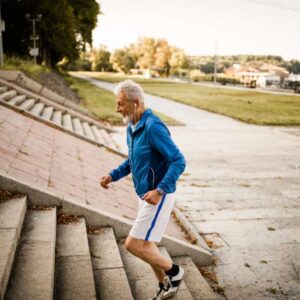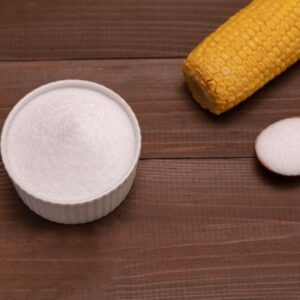
Just 35 Minutes Could SAVE Your Brain
For years, I’ve told you exercise is non-negotiable for healthy aging.
As you age you must move more to protect your body and brain.
Now, groundbreaking new research confirms what I’ve been saying all along.
Exercise can slash your dementia risk—but with a surprising twist that eliminates your last excuse for not moving more.
Dementia is not a specific disease but rather a general term for the impaired ability to remember, think, or make decisions interfering with everyday activities. Dementia occurs when brain cells are damaged, affecting their ability to communicate with each other.
Alzheimer’s disease is the most common type, accounting for 60 to 80 percent of cases.
Dementia primarily affects older adults, and the most common symptoms are memory loss, confusion, difficulty communicating, and changes in personality and behavior.
But new research reveals just 35 minutes of weekly exercise can slash your risk.
Scientists at Johns Hopkins University found that when participants were even minimally activity (exercising for as little as five minutes daily or 35 minutes weekly), they were a stunning 41 percent less likely to develop dementia compared to those who were sedentary.
That’s right—as little as five minutes a day could make the difference between maintaining your mental sharpness and losing your precious memories.
Researchers found that those who engaged in 35 minutes of moderate-to-vigorous physical activity weekly had a remarkable 41 percent reduced dementia risk compared to inactive participants.
And the benefits only increased from there:
- 36-70 minutes weekly: 60 percent reduced risk
- 71-140 minutes weekly: 63 percent reduced risk
- More than 140 minutes: 69 percent reduced risk
So, how does exercise protect your brain?
Physical activity improves blood flow to the brain, reduces inflammation, stimulates the growth of new brain cells, and strengthens connections between neurons.
Exercise also helps control risk factors for dementia, including high blood pressure, diabetes, and obesity.
Some researchers believe regular activity might even directly reduce the buildup of harmful proteins in the brain that are associated with Alzheimer’s.
I understand that beginning an exercise routine can feel daunting, especially if you haven’t been active for years. But five minutes a day? That’s less time than brushing your teeth and getting dressed in the morning!
Here are some five-minute activities you can do to start protecting your brain today:
- A brisk walk around the block
- Dancing to a couple of your favorite songs
- Simple strength exercises like chair squats or wall pushups
- Climbing stairs in your home
- Gardening or yard work
- Vigorous house cleaning
You don’t need special equipment, a gym membership, or athletic ability to do any of them. This research truly eliminates every excuse for not exercising.
P.S. “Brain Brew” SLASHES dementia risk.
Source:
Malin, S. K., Battillo, D. J., Beeri, M. S., Mustapic, M., Delgado-Peraza, F., & Kapogiannis, D. (2025). Two weeks of exercise alters neuronal extracellular vesicle insulin signaling proteins and pro-BDNF in older adults with prediabetes. Aging Cell, 24(1), e14369.
Written By Dr. Scott Olson, ND
Nearly 25 years ago, failed mainstream medical treatments left Dr. Olson in constant pain – and his health in ruins. And that’s when he did something REVOLUTIONARY. He began his career in medicine – and dedicated his life to uncovering the true, underlying causes of disease.
Through his innovative medical practices in Tennessee and Colorado, Dr. Olson has helped cure countless seniors from across America of arthritis… heart disease… diabetes… and even cancer. All without risky prescription drugs or painful surgeries.
View More Free Articles
A New Reason to Ditch Processed Junk
If you’ve ever walked the inside aisles of your local grocery store and thought, “This is all just junk,” your instincts were spot on. A new study published in the journal Thorax just added another red flag to the list of dangers linked to ultra-processed food—a 41 percent higher risk of lung cancer. That’s right....
When Being Winded on Stairs Is Serious (And When It Isn’t)
I had an athlete visit me recently because he experienced shortness of breath while climbing stairs. He is in great shape, so he was worried about what it might mean. “Doc,” he said, “I run five miles three times a week. Why am I huffing and puffing after two flights of stairs?” His concern is...
Study EXPOSES Hidden Danger Lurking in Your Car
We think of our homes and cars as safe havens. But according to a startling new study, they may be flooding your lungs with microscopic plastic particles—every single day. Researchers in France recently found that adults inhale an average of 68,000 microplastic particles daily from indoor air alone. To put that in perspective, that’s about...
Mailbag: Is Modern Food Making You Snore?
“What can cause snoring, and is there a way to correct this issue?” —Seeking Silence Hi Seeking, Snoring happens when the soft tissues in your throat relax and vibrate as air passes through during sleep. While several factors can cause snoring—from sleep position to nasal congestion—I want to share one trigger that might surprise you....
Simple Food Swap SLASHES Dementia Risk 28%
Let’s be honest… who would jump at the chance to cut their dementia risk by 28 percent. And no, you don’t need to run marathons, survive on broccoli, or learn to play the zither (whatever that is) to make it happen. All it takes is one easy swap—something that’s probably already in your refrigerator. Researchers...
This SMART Floss Exposes Hidden Health Danger
Scientists have created dental floss that doesn’t just clean between your teeth—it also tracks your stress while you’re flossing. Now, I know what you’re thinking… “Great—now even flossing is going to stress me out by telling me how stressed I am.” But this fascinating new tool from Tufts University could be a game-changer for understanding...
Is This "Safe" Sweetener Damaging Your Brain?
The headlines are alarming… “Popular Sugar Substitute Linked to Brain Cell Damage” and “Erythritol Could Damage Critical Brain Barrier” are just two of the dozens I’ve spotted recently. But before you toss every sugar-free product in your pantry, let’s take a closer look at what this study actually shows—and what it doesn’t. The latest research...
This Summer Threat Could SPIKE Your Blood Sugar
Picture this… It’s another scorching hot summer day. You crank up the air conditioning while watching the weather forecast, which predicts yet another “record-breaking” heat wave. It’s starting to feel like just another miserably uncomfortable summer. But what you might not realize is that—if you have diabetes—those rising temps could do far more damage to...
Move Over Yogurt—5 Foods That Pack MORE Probiotics
Let’s talk about your gut. The microbiome is the collection of trillions of bacteria and other tiny organisms that live in and on your body—especially in your gut—and help keep you healthy. I’ve written often about how vital it is to maintain a healthy microbiome. And you might have dutifully added yogurt to your shopping...
Is Your Heart Older Than YOU?
Maybe you feel young for your age. Good energy, decent sleep, eating your veggies. But what if I told you your heart might be a decade older than the rest of you? That’s exactly what researchers at Northwestern University found in a new study published in JAMA Cardiology. The average American woman’s heart is about...









